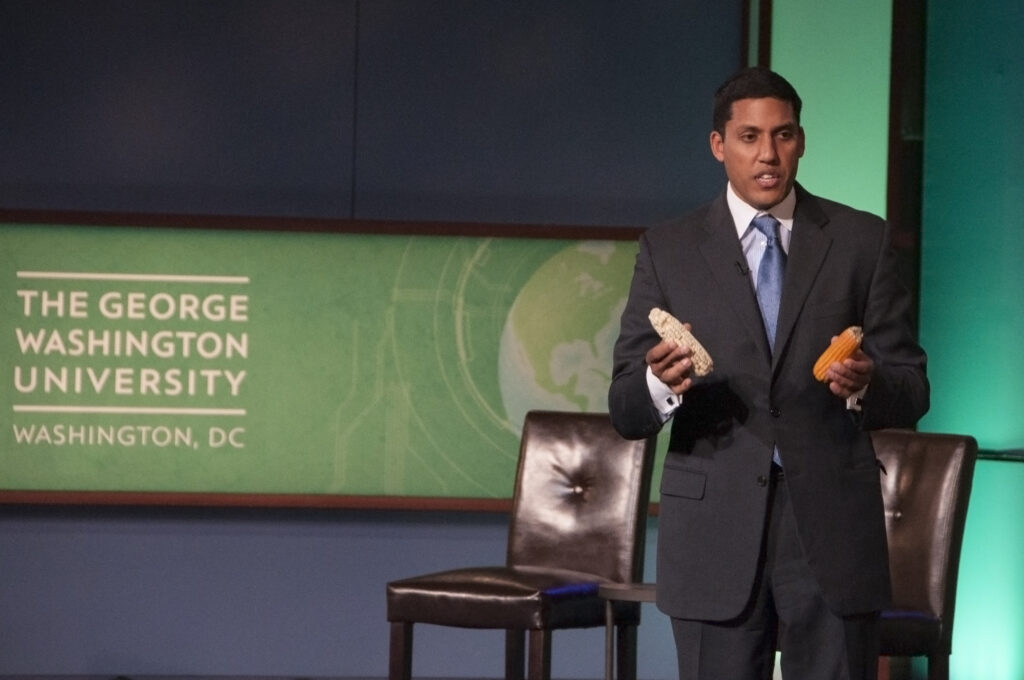Orange sweet potato (OSP) was highlighted today by the US Government as an example of one of the most innovative approaches to feeding the planet. In a keynote address at the Feeding the Planet Summit organized by The George Washington University, USAID Administrator Dr. Rajiv Shah held up, to the packed auditorium, a small orange sweet potato. Dr. Shah then broke open the sweet potato to reveal the orange flesh inside as he explained how it is providing much needed vitamin A to children in Africa. He also noted that they like its sweet taste.
Some two billion people worldwide don’t get enough vitamins and minerals in their diets. This can negatively affect their cognitive and physical development and increase their vulnerability to infectious diseases.
“It is now possible to imagine a world without widespread hunger and malnutrition,” declared Dr. Shah, who identified other key innovations for agriculture, such as drought-tolerant maize, Fertilizer Deep Placement (FDP) technology, and cell phones. Dr. Shah also displayed an orange maize cob that was conventionally bred to provide more vitamin A in the diet.
OSP is now being planted and eaten by over 126,000 farming households in Uganda alone, under a project led by HarvestPlus. The International Potato Center (CIP) has also introduced OSP into Ethiopia, Ghana, Kenya, Malawi, Mozambique, Nigeria, South Africa, Tanzania, Zambia, Zimbabwe, among other countries. HarvestPlus is disseminating conventionally bred vitamin A maize, similar to the sample displayed by Dr. Shah, in Zambia.
“We are committed to scaling up the delivery of nutrient-rich staple food crops in the coming years, and appreciate the support of the US Government and other partners in this mission,” said HarvestPlus Director Howarth Bouis.
For more on Orange Maize in Zambia, see story Orange Maize Improves Yields and Nutrition for Families in Zambia on Feed the Future website.
